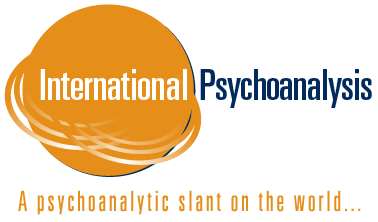FREUD’S ARCHITECTURE OF HYSTERIA: THEN AND NOWTHE PATHWAY TO FEMININE IDENTITY PRESENTERS: Susan N. Finkelstein, LCSW, Maria Teresa Flores, M.D. , Masha Mimran, Ph.D.
REGISTER https://iptar.org/event/2-7-fnp-freuds-architecture-of-hysteria-then-and-nowthe-pathway-to-feminine-identity/
Friday Night Papers: February 7 6-8pm: IPTAR, Conference Room
Freud’s hysteria and psychic architecture: démodé or still relevant today? Then and now, hysterical features and its diagnosis have shifted, from the unearthing of primal Oedipal conflict to include contemporary thinking of defense, denial of psychic reality and coping with unbearable primitive anxieties. Clinical vignettes of ‘then and now’ case material will be presented.
This panel examines Freud’s formulation of feminine identifications in hysteria, from its inception in Charcot’s Salpêtrière in the late 18th Century to today’s clinical practice. We argue that Freud’s infamous question “What does a woman want?” calls for different answers, that include the Oedipal configuration of Freud and early maternal Oedipus ituation of Klein, as well as the internal object world comprising the complicated pathway to integration of internal objects and the ultimate adoption of a feminine identification.
Susan Finkelstein’s “Creative Intercourse and the Missing Mother’s Body: Hysteria in Bonaparte and Freud” turns to one of the most intimate relationships in the history of psychoanalysis: Freud and Marie Bonaparte.
Susan N. Finkelstein, LCSW Senior Analyst: Contemporary Freudian Society. Faculty/Member: IPTAR.
Maria Teresa Flores’ “Femininity as a Mask: The Flourishing of the Feminine in the Analytic Relationship,” presents a female patient with hysterical symptoms, including conversion.
Maria Teresa Flores, M.D. Psychiatrist, Psychoanalyst, Member, Training Analyst: The Portuguese Nucleus of Psychoanalysis (NPP) – IPA Study Group; Current President: NPP-Ex European Co-Chair: IPA-COWAP (Committee on Women and Psychoanalysis).
Masha Mimran’s “Setting the Stage: Hysterical Symptomatology Medicalized and Fictionalized” revisits scientific and fictionalized accounts of hysteria in the 19th Century.
Masha Mimran, Ph.D. Candidate: IPTAR, Adult Program.
Learning Objectives
1) Be able to trace how analytic perspective on hysteria has evolved from Freud to contemporary thought
2) explore & expand on how the concept of feminine identification has progressed & can be applied to current practice
3) gain understanding on Freudian & Kleinian perspectives on feminine identification.
Teaching Method: Lecture and Discussion
Social Workers: The Institute for Psychoanalytic Training and Research, Inc. (IPTAR) SW CPE is recognized by the New York State Education Department’s State Board for Social Work as an approved provider of continuing education for licensed social workers #0226.
Licensed Psychoanalysts: The Institute for Psychoanalytic Training and Research (IPTAR) is recognized by the New York State Education Department’s State Board for Mental Health Practitioners as an approved provider of continuing education for licensed psychoanalysts (P-0011).
Licensed Creative Arts Therapists: The Institute for Psychoanalytic Training and Research (IPTAR) is recognized by the New York State Education Department’s State Board for Mental Health Practitioners as an approved provider of continuing education for licensed creative arts therapists (#CAT-0037).
(2) CE credits will be granted to participants who have registered, have documented evidence of attendance of the entire program and have completed the on-line evaluation form. Upon completion of the evaluation form a Certificate of Completion will be emailed to all participants who comply with these requirements.
25.00 CE & General Admission Ticket
ReplyReply allForward
